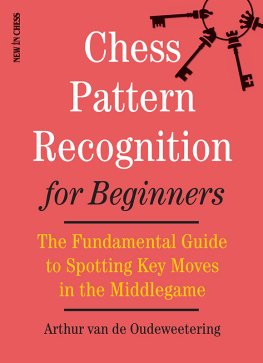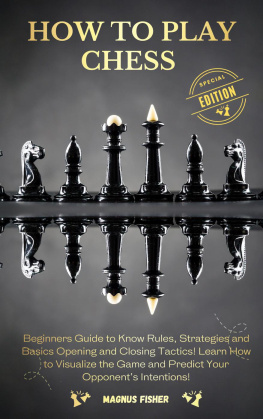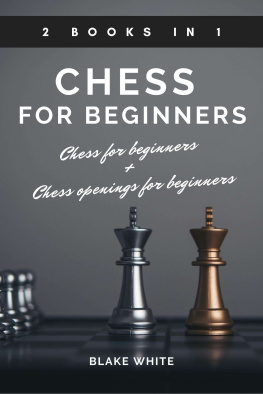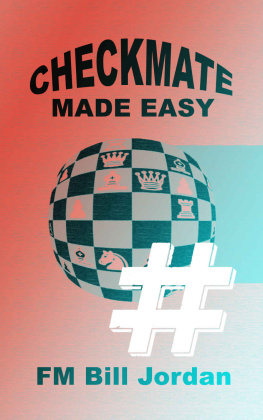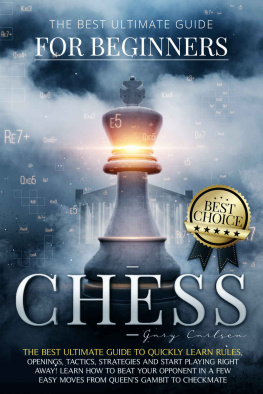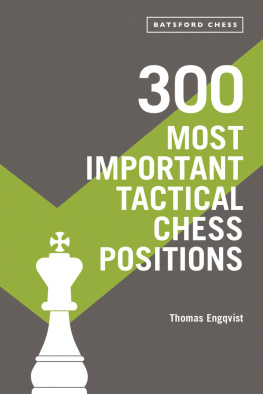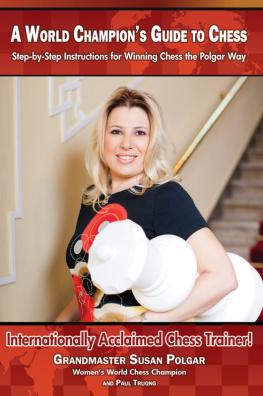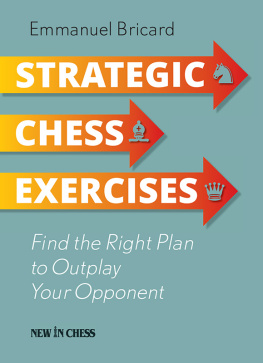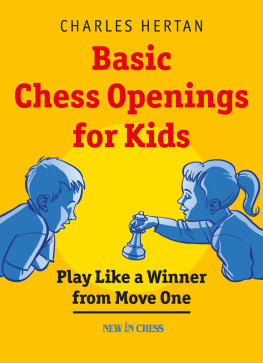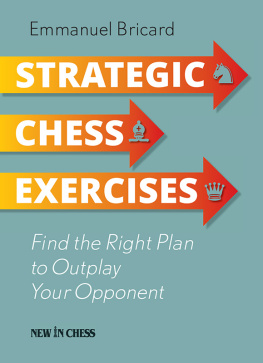Chess Pattern Recognition for Beginners Arthur van de Oudeweetering Chess Pattern Recognition for Beginners The Fundamental Guide to Spotting Key Moves in the Middlegame New In Chess 2018 To my proud and always supportive parents Ferrie and Joke. To my ever encouraging and understanding family Edith, Julie and Ilja. 2018 New In Chess Published by New In Chess, Alkmaar, The Netherlands www.newinchess.com All rights reserved. No part of this book may be reproduced, stored in a retrieval system or transmitted in any form or by any means, electronic, mechanical, photocopying, recording or otherwise, without the prior written permission from the publisher. Cover design: Volken Beck Supervision: Peter Boel Editing and typesetting: Frank Erwich Proofreading: Joe Petrolito, Sandra Keetman Production: Anton Schermer Have you found any errors in this book? Please send your remarks to and implement them in a possible next edition. ISBN: 978-90-5691-803-3 Explanation of symbolsThe chessboard with its coordinates:
 | White to move |
 | Black to move |
| King |
| Queen |
| Rook |
| Bishop |
| Knight |
 | White stands slightly better |
 | Black stands slightly better |
 | White stands better |
 | Black stands better |
| + | White has a decisive advantage |
| + | Black has a decisive advantage |
| = | balanced position |
| ! | good move |
| !! | excellent move |
| ? | bad move |
| ?? | blunder |
| !? | interesting move |
| ?! | dubious move |
Foreword
by Vladimir Chuchelov In January this year, at the Tata Chess Tournament, I ran into Arthur, whom I know from the years when we were both trainers for the Dutch Chess Federation.
We both took care of one of the national youth selections; I think he did the youngest group. That really is some time back now, but in recent years I noticed he had become a serious chess author. Moreover, when we met this year, he told me, amongst other things, that he was working on the book which is now in front of you. Arthur himself has provided an extensive Preface, in which he gives further information and explanation about the contents and structure of the book. Of course here I could expand on that, and select a couple of the many interesting fragments, but in general it feels unnecessary to me to go through the book with you as well. Instead, I will say a couple of words about the subject itself.
Recognition of strategic patterns is a very essential matter; it really helps during a game. Once we see a certain familiar pattern, we can make a mental link with the current situation on the board and figure out the right way to proceed. Knowledge of different strategic ideas is directly linked to so-called intuition, which is a positional feeling that trainees should develop over the years. This goes for beginners as well as advanced players and even top players. It is part of our general chess development. In my own praxis, working mostly with advanced players, we rather deal with a complete strategical evaluation of positions, which is known to my students as the strategic balance.
One specific strategic pattern will often play a role, but it will always be in the context of the whole evaluation, the pattern being just one of various elements. Nevertheless, it is something you can talk about at a later stage. The present book is designed for the starting chess player. And indeed, it provides an excellent means to help you make your first steps towards this competence of making complete strategical evaluations of positions. This may be a long and difficult road to travel, but for now this book will make you acquainted with numerous basic patterns, and allow you to accumulate essential knowledge connected to these patterns. Get ready and have a good time while working through the book! Vladimir ChuchelovEupen, October 2018Preface As this book is about the middlegame, it could hardly be for absolute beginners.
When you make your first steps in studying chess, there is a good chance that initially you will be attracted by other subjects than intricate middlegame strategy. For instance, many interesting opening books and DVDs will be available for you, covering fashionable, tempting opening lines. Theres nothing wrong with that, its great fun to play these in practice, and in due course it will hopefully teach you general things about the opening phase as well. Also, probably your eyes may fall on some instructive YouTube videos about the endgame, or you may even be attracted to a concise endgame manual and learn some basics. If it contains well-arranged material covering positions with a limited amount of pieces, this will easily allow you to pick up numerous instructive principles. This is very useful too, of course.
Certainly you will be drawn into tactics when you start to be taken into chess. Lots of exercises are available on the internet, as well as in printed form. Apart from all this, chances are that some of you will install one of the easily available chess engines on your computer and experiment with it. If indeed you have done a bit of work and exploring in the diverse areas of chess, as described above, now this book will provide a next step to get acquainted with the game of chess, and will introduce you into the fascinating complexity of the middlegame. That is, with the help of clear patterns, which cover what will be considered basic knowledge by more advanced players. Like in the preface of my book Improve Your Chess Pattern Recognition from 2014 (henceforth to be called IYCPR), I want to make two things clear right from the start.
First of all, this book is definitely about pattern recognition, but there will be no such thing as a scientifically proper definition. The truth is, a proper definition can be rather diffuse, just like in current World Champion Magnus Carlsens statement from 2010, where he emphasized the importance of pattern recognition: One of the most important things in chess is pattern recognition: the ability to recognise typical themes and images on the board, characteristics of a position and their consequences. (interview in the German magazine Der Spiegel) So before you is just a practical book, where in each and every chapter it will be clear to you which pattern is to be recognized in every example. There is another important thing to point out: the book is about strategic patterns, not tactical ones such as typical mate patterns. You may encounter some tactical patterns along the way, but generally you should pick those up from good books on tactics. Also, as the title says, this book deals mainly with the middlegame. So, strategic patterns in the middlegame it is! As this book is designed for beginners, I have selected the more common and obvious patterns that underline the basic rules of the game.
Whereas my two former pattern recognition books were partly based on previous columns I had written, this book has been written practically from scratch. To suit the purpose of the book, exceptions to the rules have been eliminated this time. There are no strong knights on the rim in this book, and no more chapters about the possible strength of doubled pawns. On the contrary, in the first section, you will find a chapter on how to profit from the expected weakness of an isolated doubled pawn, or how to profit from a classically strong knight on d5. Where in T
Next page
